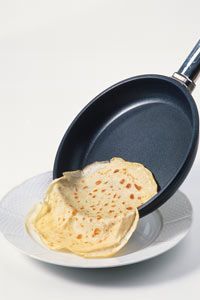With busy schedules and long to-do lists, people are constantly looking for ways to save time. From drive-through to carry-out, restaurants offer more ways to get food fast. For people who prefer home cooking, cookbooks and Web sites are boasting meals that can be completed in less than 30 minutes and make-ahead options to reheat at dinnertime.
But for some chefs, it's less about the time it takes to make food and more about the time it takes to clean up. That's where nonstick cookware comes in. Nonstick cookware lets people fry, sauté, stew and bake with less mess and less fat. While the true merits of some nonstick technologies have been the subject of debate, this kitchen convenience offers an alternative to hours of scrubbing the remains of a grilled cheese sandwich or pancake batter from the inside of a pan.
Advertisement
Yet without a chance discovery, nonstick cookware might never have been invented in the first place. Following nonstick cookware from the first nonstick technology to recent advancements in the world of pots and pans, this article will cover everything from coating chemistry to the process used to bind a nonstick surface to a pan. You'll pick up a few tips on how to maintain and preserve the nonstick coating on your pans, and you'll get the scoop on whether nonstick cookware is as dangerous as some reports claim it is.
We'll start by exploring the accidental discovery of the world's first nonstick technology and how it led to the first piece of nonstick cookware in the United States.
